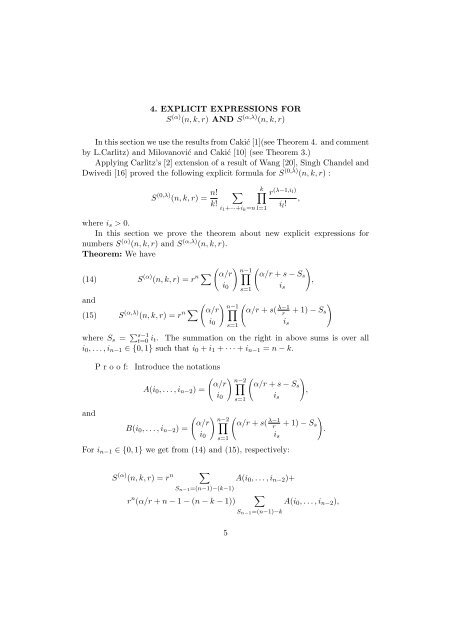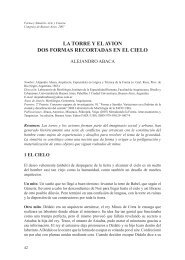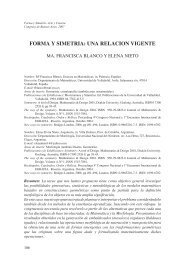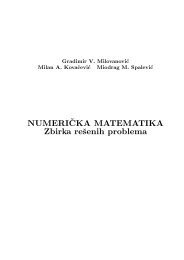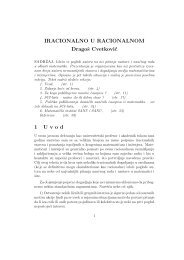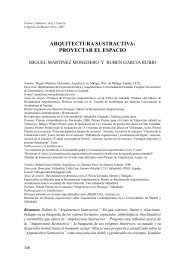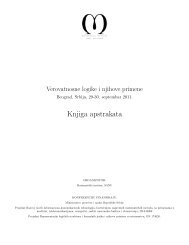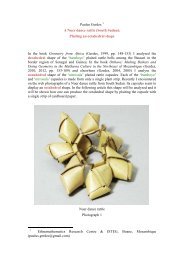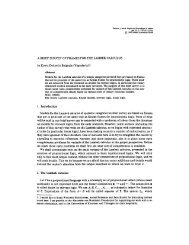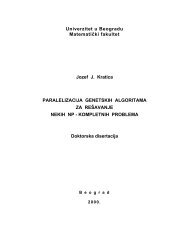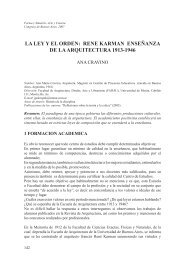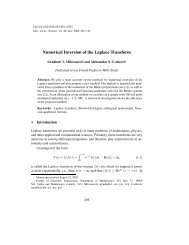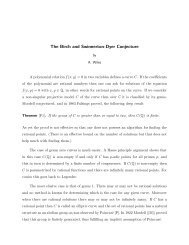ON GENERALIZED STIRLING NUMBERS AND POLYNOMIALS
ON GENERALIZED STIRLING NUMBERS AND POLYNOMIALS
ON GENERALIZED STIRLING NUMBERS AND POLYNOMIALS
Create successful ePaper yourself
Turn your PDF publications into a flip-book with our unique Google optimized e-Paper software.
4. EXPLICIT EXPRESSI<strong>ON</strong>S FORS (α) (n, k, r) <strong>AND</strong> S (α,λ) (n, k, r)In this section we use the results from Cakić [1](see Theorem 4. and commentby L.Carlitz) and Milovanović and Cakić [10] (see Theorem 3.)Applying Carlitz’s [2] extension of a result of Wang [20], Singh Chandel andDwivedi [16] proved the following explicit formula for S (0,λ) (n, k, r) :S (0,λ) (n, k, r) = n! ∑ k∏ r (λ−1,i l),k!ii 1 +···+i k =n l=1 l !where i s > 0.In this section we prove the theorem about new explicit expressions fornumbers S (α) (n, k, r) and S (α,λ) (n, k, r).Theorem: We have(14)and(15)S (α) (n, k, r) = r n ∑ ( )α/r n−1( )∏ α/r + s − Ss,i 0 is=1 sS (α,λ) (n, k, r) = r n ∑ ( )α/r n−1( )∏ α/r + s(λ−1r+ 1) − S si 0 is=1 swhere S s = ∑ s−1t=0 i t. The summation on the right in above sums is over alli 0 , . . . , i n−1 ∈ {0, 1} such that i 0 + i 1 + · · · + i n−1 = n − k.P r o o f:Introduce the notations( )α/rn−2( )∏ α/r + s − SsA(i 0 , . . . , i n−2 ) =,i 0 is=1 sandB(i 0 , . . . , i n−2 ) =( )α/rn−2( )∏ α/r + s(λ−1r+ 1) − S s.i 0 is=1 sFor i n−1 ∈ {0, 1} we get from (14) and (15), respectively:S (α) (n, k, r) = r n∑S n−1 =(n−1)−(k−1)r n (α/r + n − 1 − (n − k − 1))5A(i 0 , . . . , i n−2 )+∑S n−1 =(n−1)−kA(i 0 , . . . , i n−2 ),


